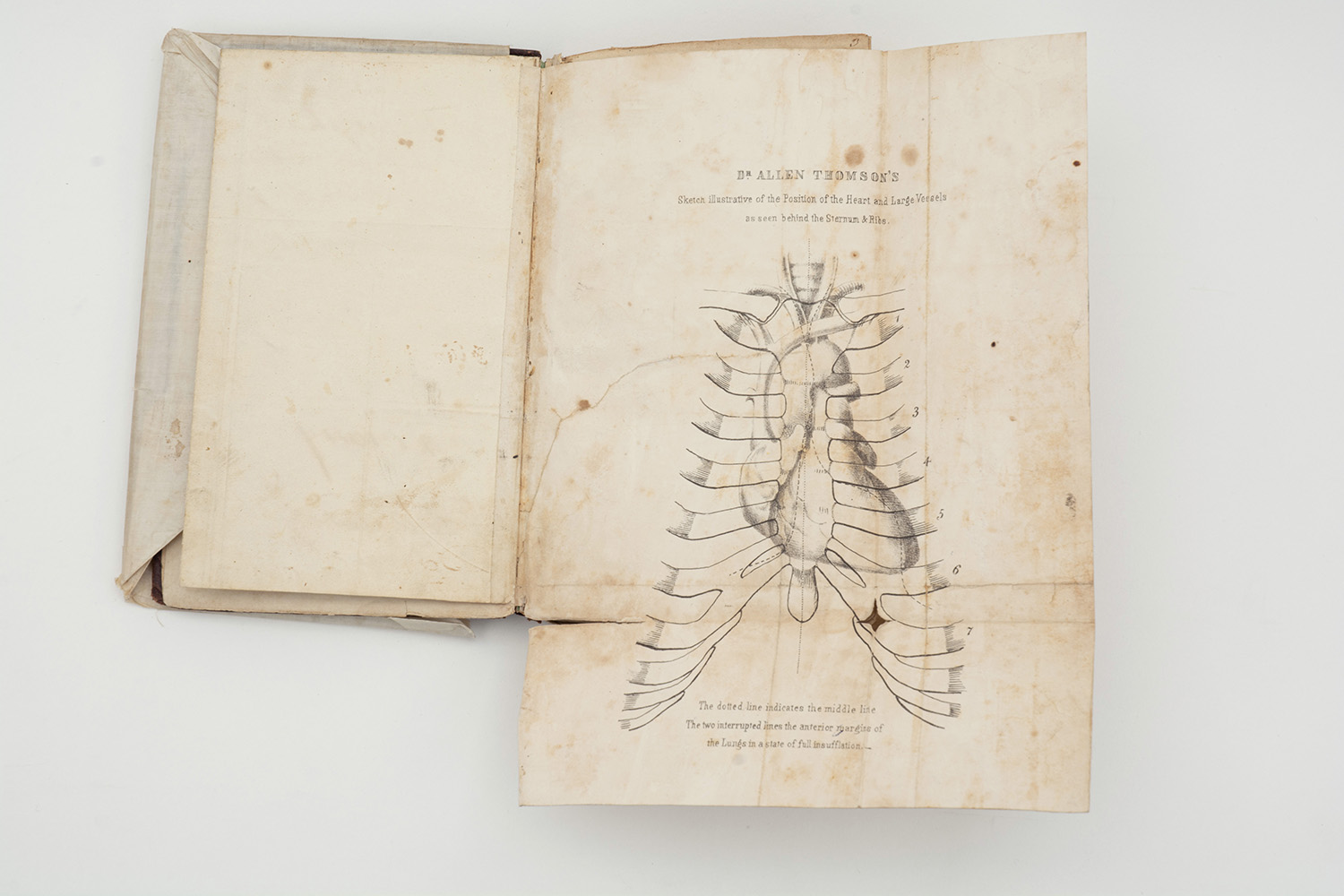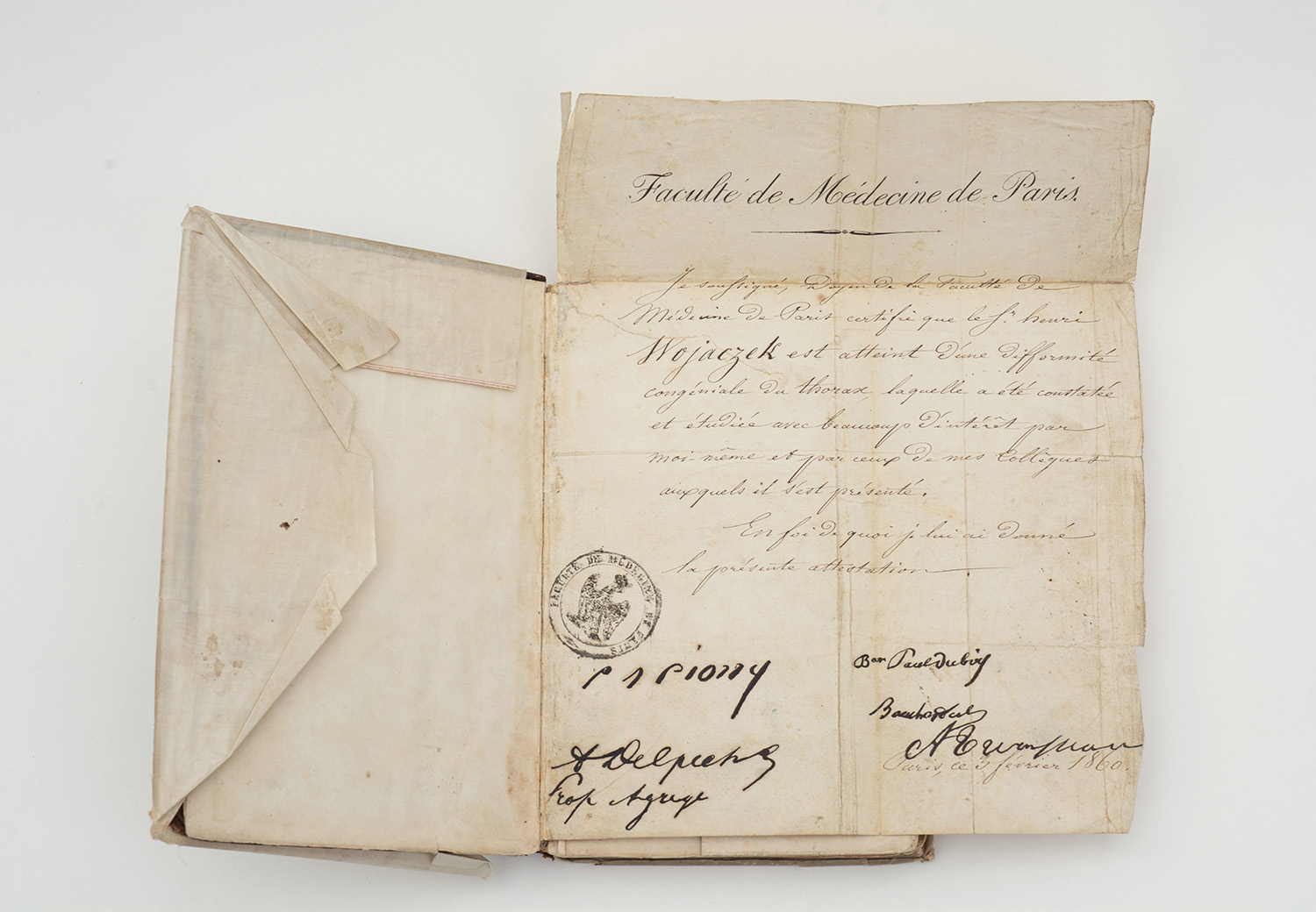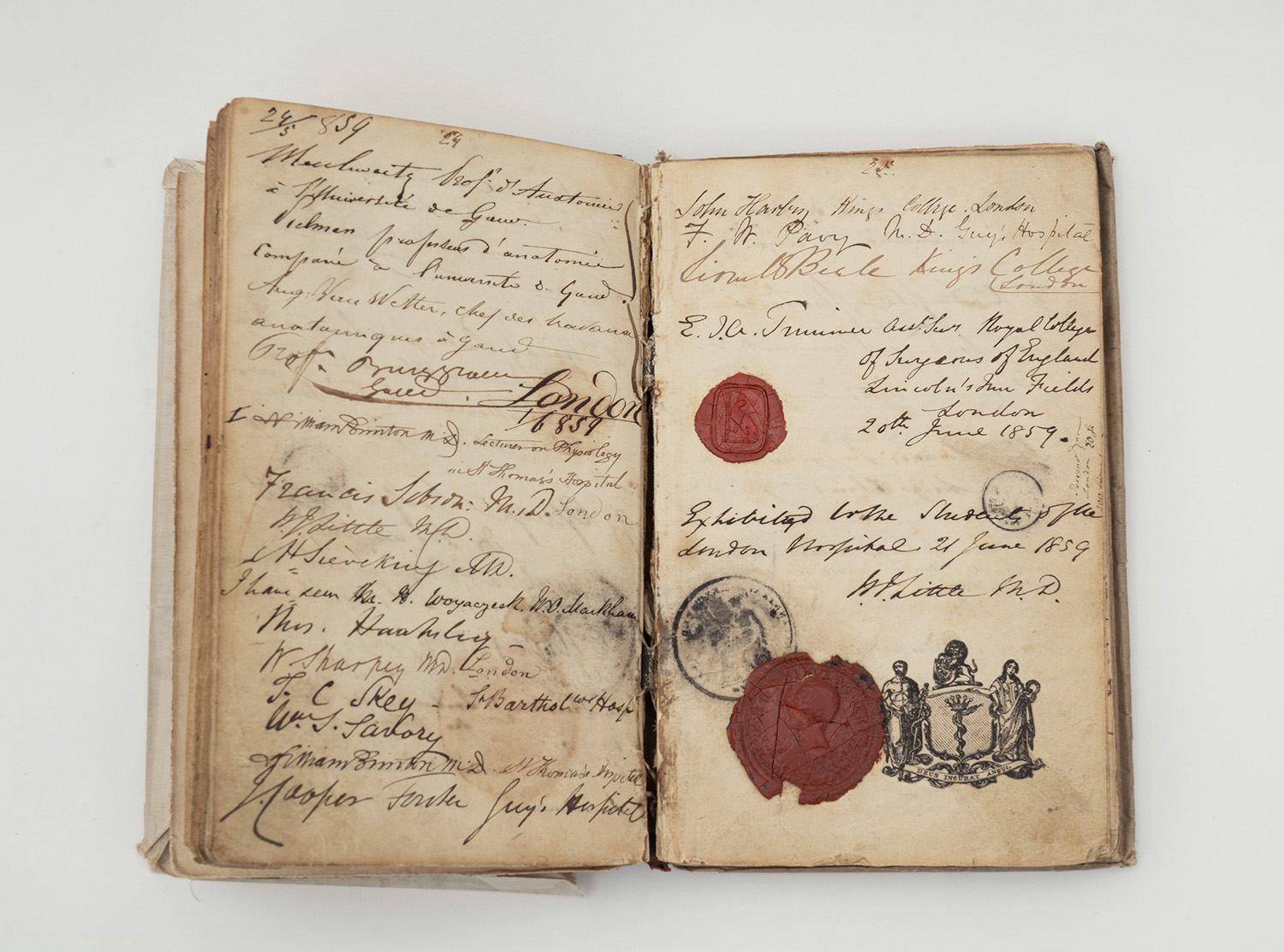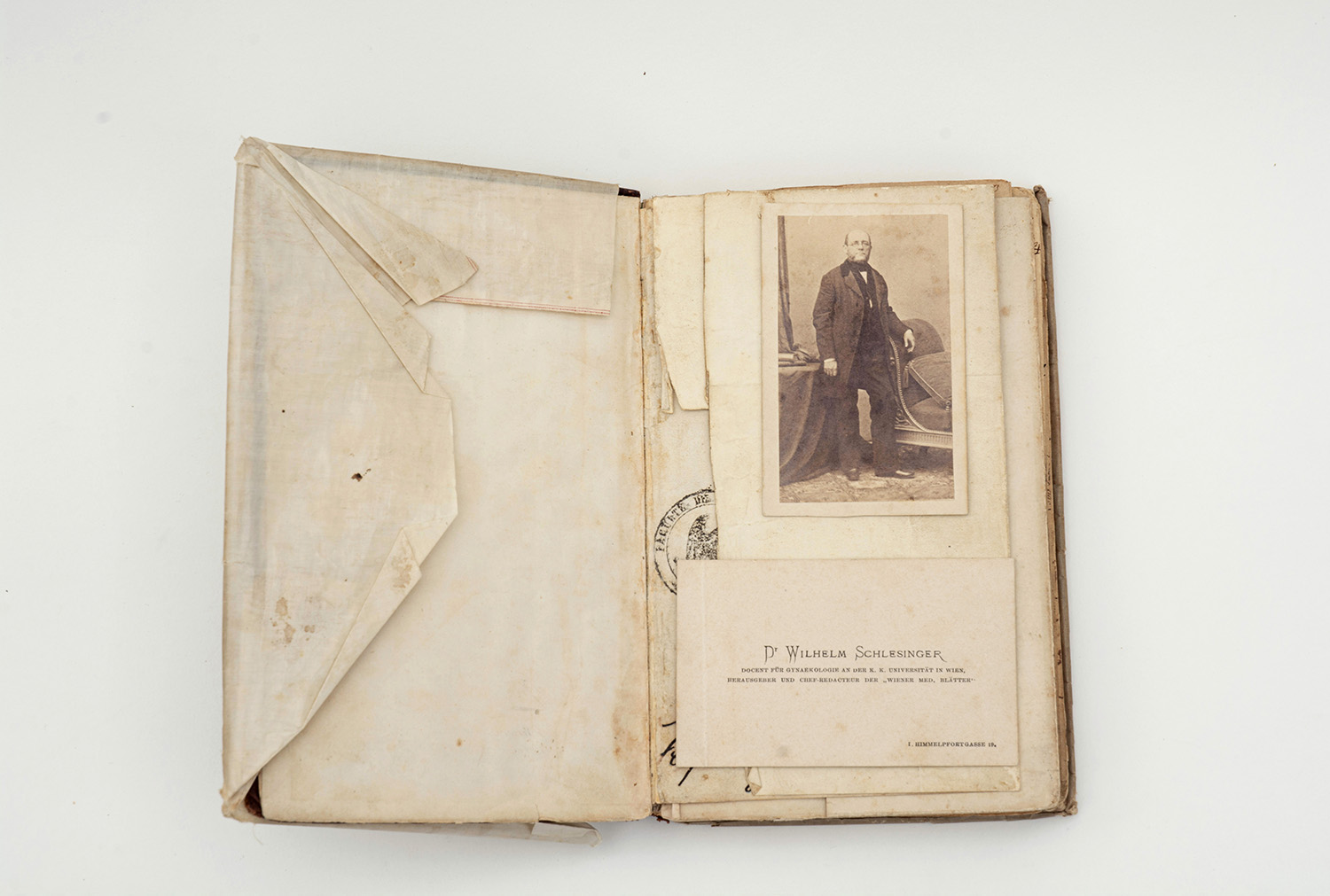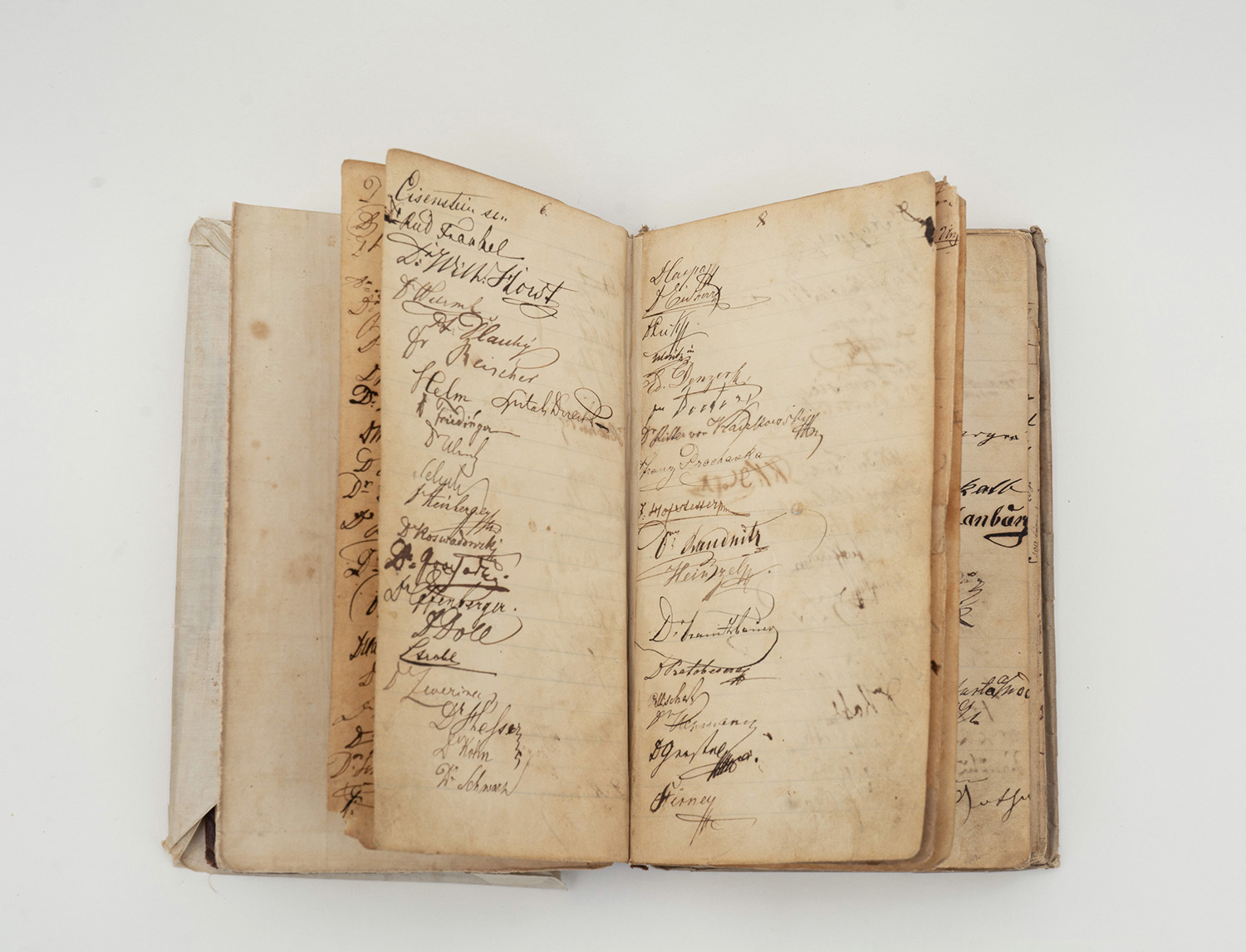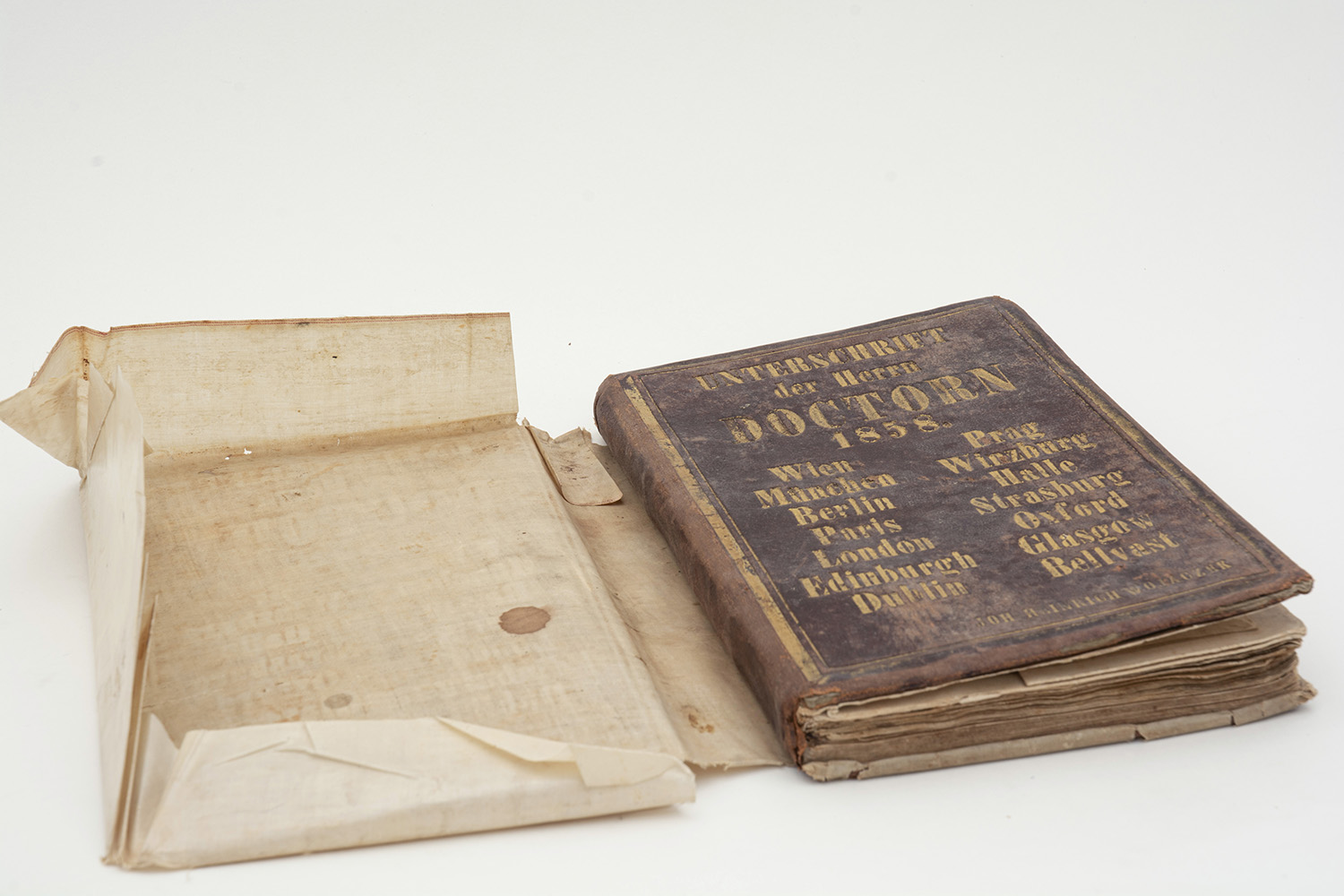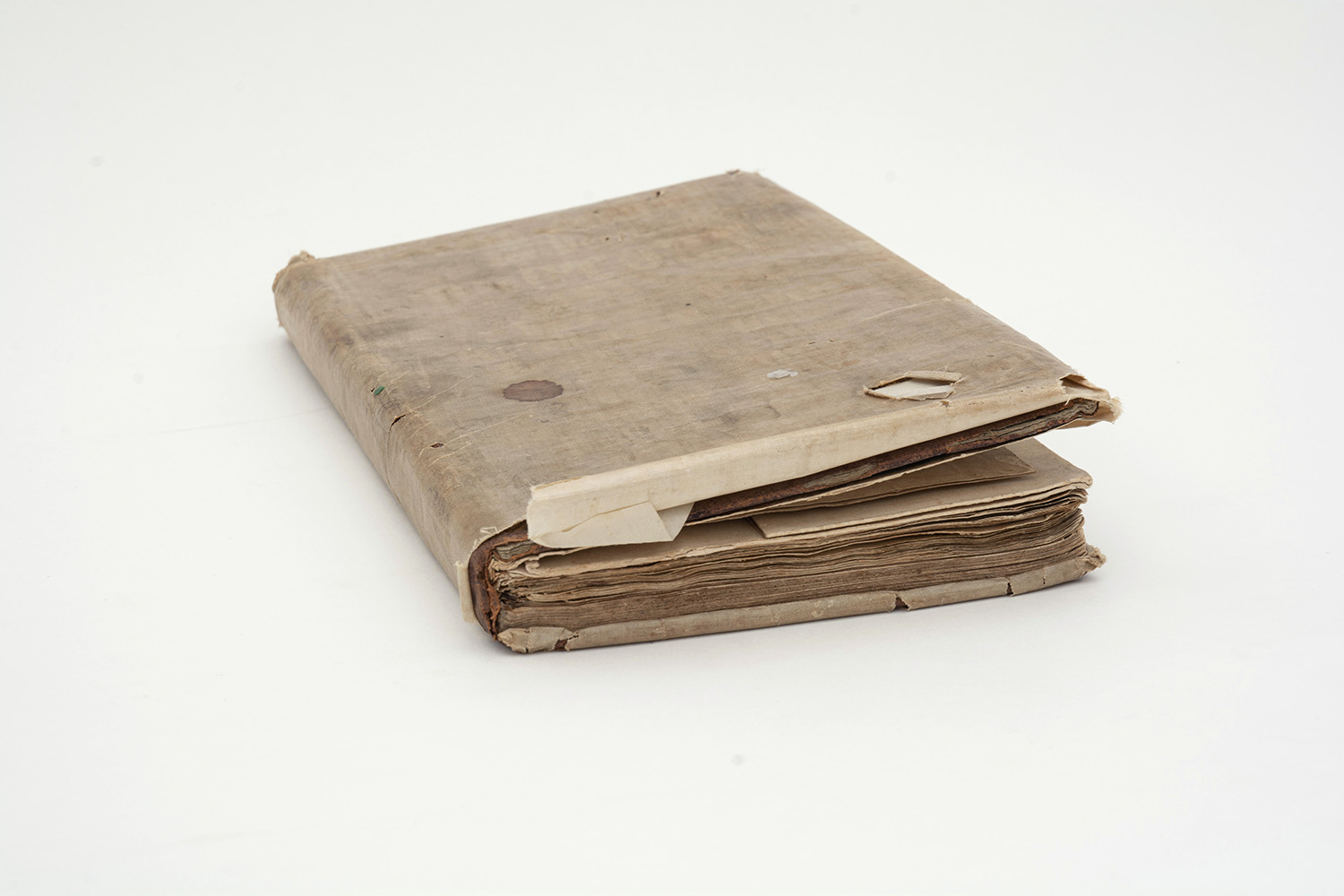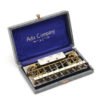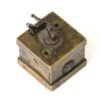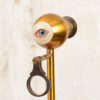Malformation of Dr. Johann Heinrich Wojaczek’s chest, the personal travel note book of Mr. Wojaczek with autographs of doctors.
€2,500
Unterschrift der Herrn Doctorn 1858. Wien; Prag; München; Wirzburg; Berlin; Halle; Paris; Strasburg; London; Oxford; Edinburgh; Glasgow; Dublin; Bellvast. (Notizbuch über die Reise und Präsentation einer Brustkorb-Deformation) Wojaczek, Johann Heinrich.
Circa
1860
Country of manufacture
Other
Description
Malformation of the chest”: Dr. Wojaczek from Vienna who is a native of Oslavau in Moravia and aged about 23 is the subject of a peculiar malformation of the chest which has been examined by eminent medical men at the different universities and medical schools of Europe. This gentleman was introduced by Dr. Alexander Simpson and submitted himself for examination by the members of the Medico Chirurgical Society of Edinburgh. In front the chest presents in the middle at its lower part a remarkable depression or hollow about three inches deep and large enough to lodge the head of a child. This hollow is formed by the inflexion of the sternum downwards and backwards towards the spinal column which it approaches so closely that by calculation only about 14 inches intervene between the lower end of the sternum and the front of the bodies of the vertebrae. There is no deficiency of the osseous or cartilaginous textures but the cartilages of the ribs are bent backwards to join the depressed sternum and form the sides of the hollow, the skin and soft parts present nothing unusual. In consequence of this peculiar shape of the chest the respiration is almost exclusively carried on by the diaphragms and false ribs. This malformation appears to have been congenital and was first discovered by Professors Skoda and Rokitansky during an illness in which they had occasion to examine Mr. Wojaczek’s chest. Casts of the malformation have been placed in the Museums of the University and of the Royal College of Surgeons.
(Edinburgh Medical and Surgical Journal, June 1860)
8° (19,5 x 12,5 cm), OLdr., 94 benutzte S., Einband mit Goldprägung, hunderte Unterschriften und etliche Atteste mit hauptsächlich schwarzer Tinte, dazu Stempel und Siegel, diese teilweise brüchig, benutzter und teilweise schmutziger Zustand. Dazu zwei lose CdV Porträtfotos und zwei eingeklebte Fotos sowie einer Visitkarte. Dr. Johann Heinrich Wojaczek kam aus Oslavau in Mähren um in Wien Medizin zu studieren und hatte selbst eine eigenartige Deformation seines Brustkorbes, die er später als “Trichterbrust” bezeichnete. Als Student unternahm er ab 1858 ausführliche Reisen durch Europa um sich von Ärzten begutachten zu lassen und über seine Brustdeformation Atteste erstellen zu lassen. In seinem Notizbuch ließ er die Ärzte entweder nur unterschreiben oder sie hinterließen ihm ausführlichere Texte mit teils Stempel oder Siegel.
Erstmalig erwähnt wurde diese Demostrations-Reise im Edinburgh Medical and Surgical Journal, June 1860: “Malformation of the chest”: Dr. Wojaczek from Vienna who is a native of Oslavau in Moravia and aged about 23 is the subject of a peculiar malformation of the chest which has been examined by eminent medical men at the different universities and medical schools of Europe. This gentleman was introduced by Dr. Alexander Simpson and submitted himself for examination by the members of the Medico Chirurgical Society of Edinburgh. In front the chest presents in the middle at its lower part a remarkable depression or hollow about three inches deep and large enough to lodge the head of a child. This hollow is formed by the inflexion of the sternum downwards and backwards towards the spinal column which it approaches so closely that by calculation only about 14 inches intervene between the lower end of the sternum and the front of the bodies of the vertebrae. There is no deficiency of the osseous or cartilaginous textures but the cartilages of the ribs are bent backwards to join the depressed sternum and form the sides of the hollow, the skin and soft parts present nothing unusual. In consequence of this peculiar shape of the chest the respiration is almost exclusively carried on by the diaphragms and false ribs. This malformation appears to have been congenital and was first discovered by Professors Skoda and Rokitansky during an illness in which they had occasion to examine Mr. Wojaczek’s chest. Casts of the malformation have been placed in the Museums of the University and of the Royal College of Surgeons. Das Notizbuch hat 94 beschriebene Seiten und einige extra mit eingeklebt sowie zwei Carte de Visit-Fotografien, die eine von Carl Freiherr von Rokitansky und die andere möglicherweise von Prof. Joseph Skoda. Es ist sehr dekorativ durch die vielen Stempel, Unterschriften und Siegel von berühmten Ärzten und informativ zu Lesen. Eine große Rarität!
Ask the Dealer
Dealer information
 WissenschaftlichesKabinet
WissenschaftlichesKabinet
Wissenschaftliches Kabinett
The Wissenschaftliches Kabinett is based in the inner city of Vienna, Austria and was established in 1988 by Dr. Max Weber. Later it was taken over by Simon Weber-Unger who specializes in antique scientific and natural history antiques. The Wissenschaftliches Kabinett Simon Weber-Unger exhibits at the Hofburg Antique Fair in Vienna, the Residenz Antique Fair in Salzburg, the antique scientific instrument fair in London and at antique fairs in Zurich and Munich. Simon Weber-Unger is the head of the antique scientific instrument department and antique camera department at the auction house Dorotheum in Vienna and has published articles about scientific instruments in several magazines.




